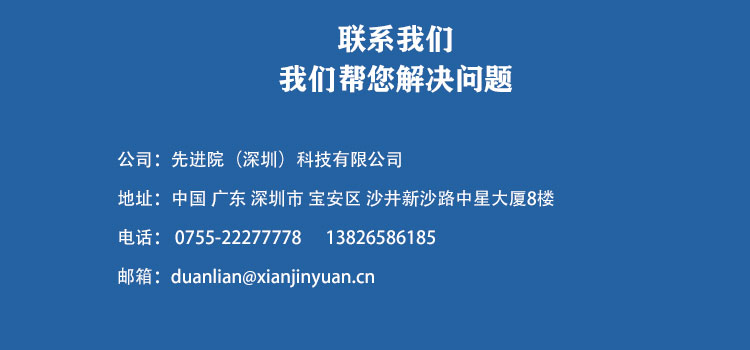1、 Introduction
Radar Absorbing Materials (RAM) are key materials in modern electronic warfare and stealth technology. Their main function is to absorb incident radar waves, reduce reflected signals, and thus lower the radar cross section (RCS) of targets. The performance of absorbing materials mainly depends on their attenuation characteristics, that is, the material's ability to absorb electromagnetic waves. This article will explore
Radar absorbing materialThe attenuation characteristics and their improvement methods.
2、 Attenuation characteristics of radar absorbing materials
(1) Attenuation mechanism
-
Dielectric loss
-
Dielectric loss is the conversion of electromagnetic wave energy into thermal energy through the polarization process inside the material. Dielectric loss materials typically have a high dielectric constant (ε), such as silicon carbide (SiC), graphene, and carbon nanotubes. These materials undergo polarization under the action of electromagnetic fields, resulting in energy loss and absorption of electromagnetic waves.
-
Magnetic loss
-
Magnetic loss is the conversion of electromagnetic wave energy into thermal energy through the magnetization process of materials. Magnetic loss materials typically have high magnetic permeability (μ), such as carbonyl iron powder, nano nickel powder, etc. These materials will generate hysteresis and eddy current losses in an alternating magnetic field, thereby absorbing electromagnetic waves.
-
Structural loss
-
Structural loss is the process of increasing the propagation path of electromagnetic waves through the microstructure design of materials, causing them to reflect and scatter multiple times inside the material, and ultimately be absorbed. For example, designs such as porous structures, honeycomb structures, and gradient structures can effectively increase the propagation path of electromagnetic waves and improve absorption performance.

(2) Factors affecting attenuation characteristics
-
Material composition
-
Absorbing materialThe composition directly affects its attenuation characteristics. The higher the dielectric constant of dielectric loss materials, the higher the magnetic permeability of magnetic loss materials, and the better their absorption performance. For example, adding high dielectric constant nanoparticles (such as carbon nanotubes) or high permeability magnetic particles (such as carbonyl iron powder) can significantly improve the attenuation characteristics of the material.
-
material structure
-
The microstructure of materials has a significant impact on attenuation characteristics. The design of porous, layered, and gradient structures can increase the propagation path of electromagnetic waves and improve scattering and absorption efficiency. For example, gradient structured materials can effectively reduce electromagnetic wave reflection and increase absorption by gradually changing the electromagnetic parameters of the material in the thickness direction.
-
Electromagnetic wave frequency
-
The attenuation characteristics of absorbing materials are closely related to the frequency of electromagnetic waves. Generally speaking, materials have good absorption performance within a specific frequency range. For example, certain materials exhibit good absorption performance in the X-band (8-12 GHz) or Ku band (12-18 GHz), but poor performance in other frequency bands. Therefore, the design of absorbing materials needs to be optimized based on the frequency range of the target application.
3、 Methods for improving the attenuation characteristics of radar absorbing materials
(1) Material modification
-
The application of nanomaterials
-
Nanomaterials have high specific surface area and special electromagnetic response characteristics, which can significantly improve their absorption performance. For example, carbon nanotubes and graphene have high dielectric constant and good conductivity, which can enhance dielectric loss. Nano magnetic particles (such as carbonyl iron powder) can improve magnetic loss. By uniformly dispersing nanomaterials in the matrix material, the attenuation characteristics of the material can be effectively improved.
-
Composite Material Design
-
By using composite material design and combining dielectric loss materials with magnetic loss materials, multiple loss mechanisms can be synergistically achieved. For example, by combining carbon nanotubes and carbonyl iron powder into a resin matrix, both dielectric loss and magnetic loss can be utilized simultaneously to improve the material's absorption performance.

(2) Structural Design
-
Gradient structure design
-
Gradient structured materials can effectively reduce electromagnetic wave reflection and increase absorption by gradually changing the electromagnetic parameters of the material in the thickness direction. For example, designing a multi-layer structure where the dielectric constant and magnetic permeability of each layer gradually increase, allowing electromagnetic waves to gradually adapt to the material's electromagnetic properties and reduce reflection when entering the material.
-
Porous structure design
-
Porous structural materials increase the propagation path of electromagnetic waves, causing them to reflect and scatter multiple times inside the material, ultimately being absorbed. For example, porous materials such as foam metal or foam ceramics have good wave absorption performance, and their porosity and pore size can be adjusted through the preparation process to optimize the wave absorption performance.
(3) Process optimization
-
Optimization of molding process
-
Optimizing the molding process can improve the uniformity and density of materials, thereby enhancing their attenuation characteristics. For example, in the preparation process of prepreg, by precisely controlling the uniformity of fiber impregnation and the degree of pre curing, the uniformity of material properties can be improved. Strictly controlling parameters such as temperature, pressure, and time during the lamination process can ensure the curing quality of the material.
-
Post processing technology
-
The attenuation characteristics of the material can be further improved through post-processing techniques. For example, heat treatment or chemical treatment of the formed material can improve its microstructure and enhance its electromagnetic properties. Heat treatment can remove impurities and stresses from materials, while chemical treatment can alter the surface properties of materials and enhance their electromagnetic responsiveness.

4、 Conclusion
Radar absorbing materialThe attenuation characteristics are its core performance indicators, which can be significantly improved through methods such as material modification, structural design, and process optimization. The application of nanomaterials, composite material design, gradient structure, and porous structure design can achieve synergistic effects of multiple loss mechanisms. Optimizing the molding and post-treatment processes can improve the uniformity and density of materials. In the future, with the continuous development of materials science and process technology, the performance of radar absorbing materials will continue to improve, providing stronger support for modern electronic warfare and stealth technology.
The above data is for reference only, and specific performance may vary due to production processes and product specifications.







